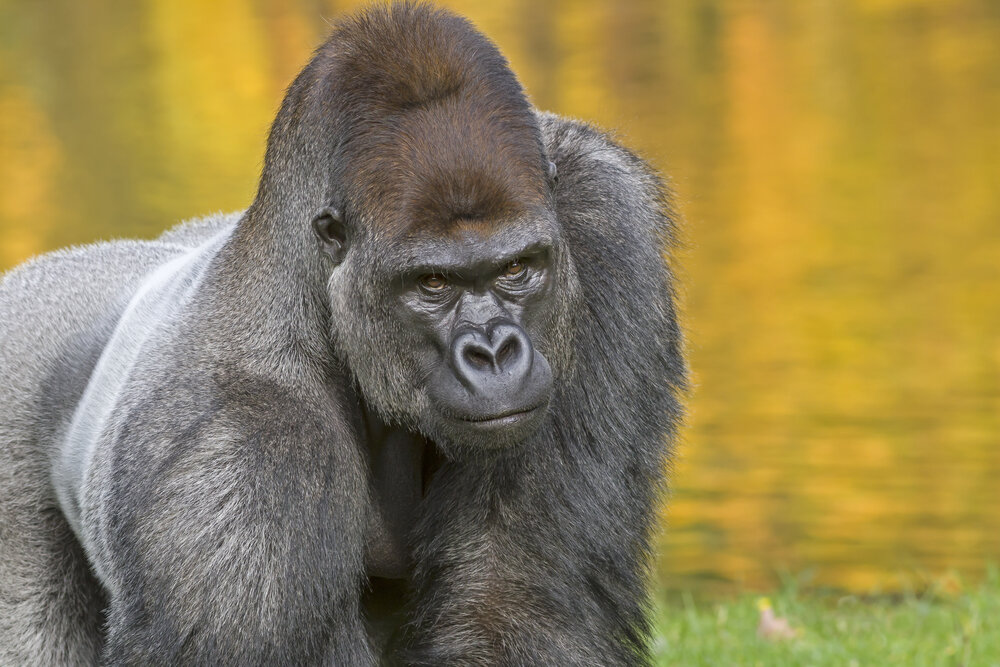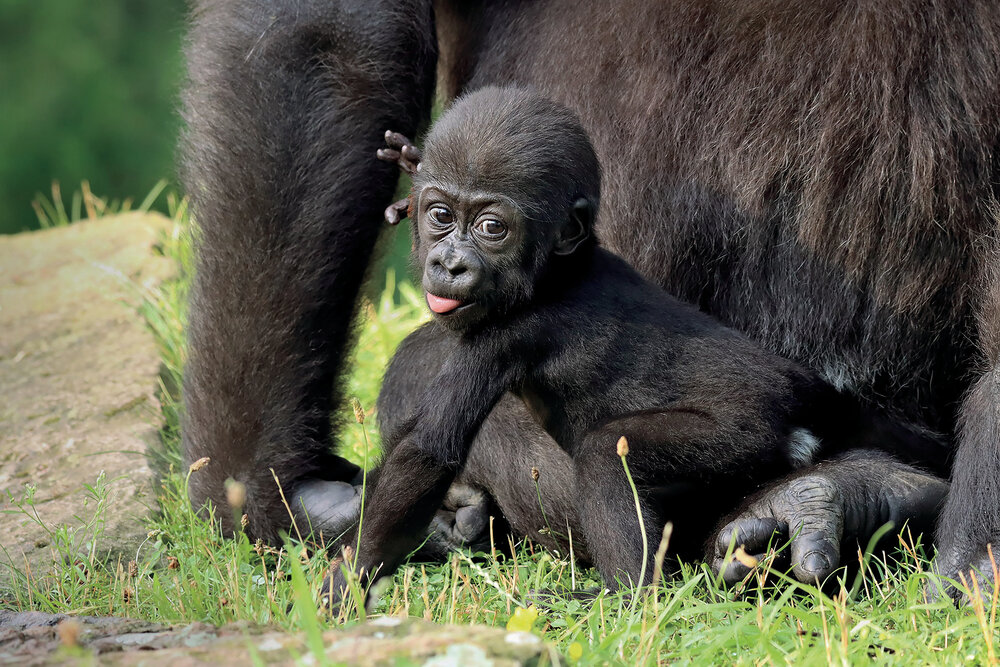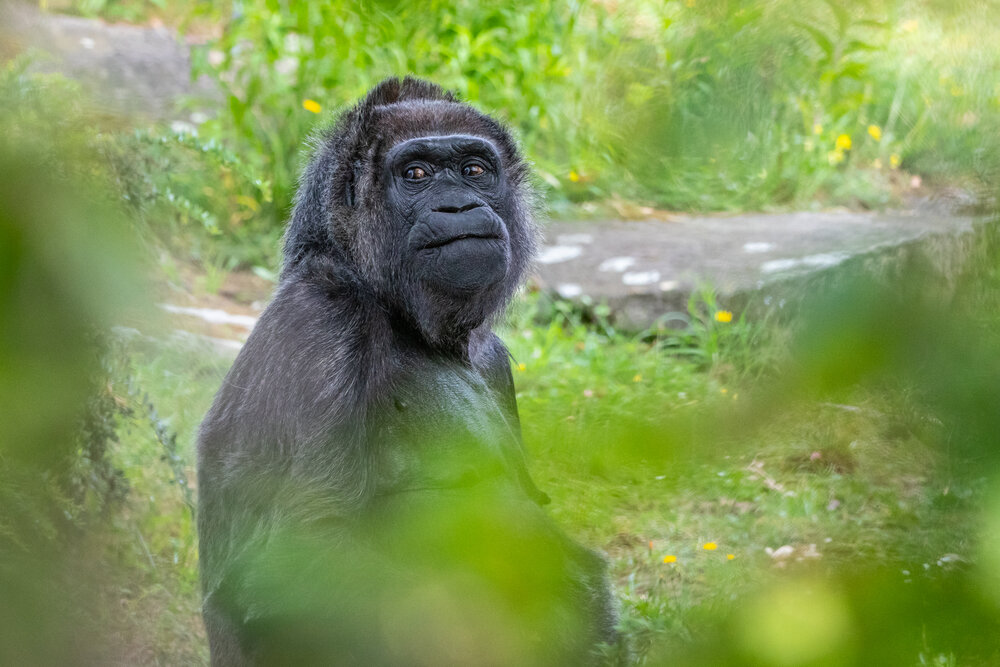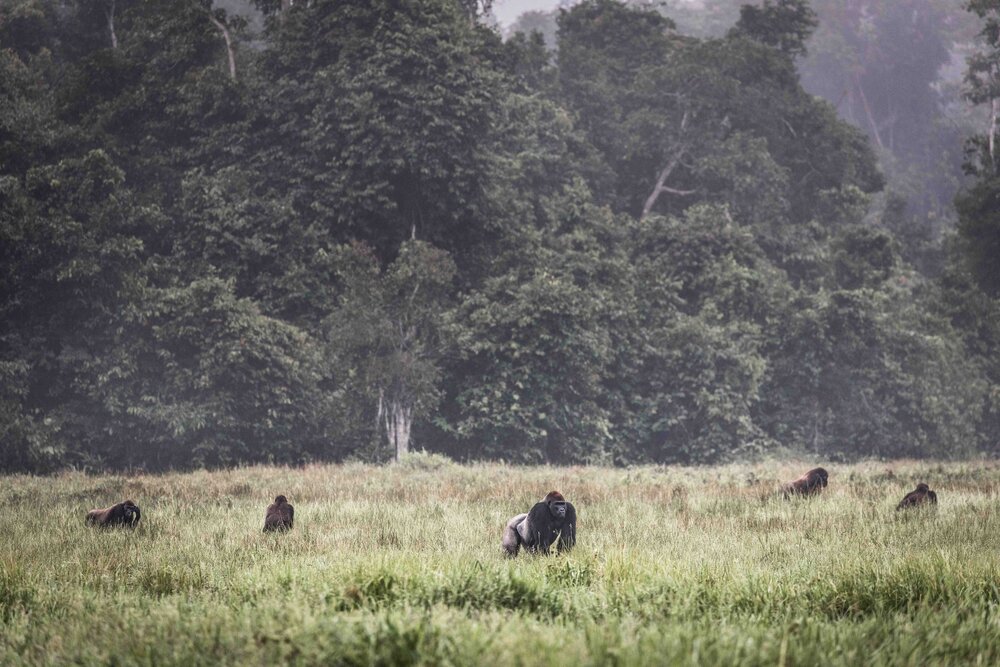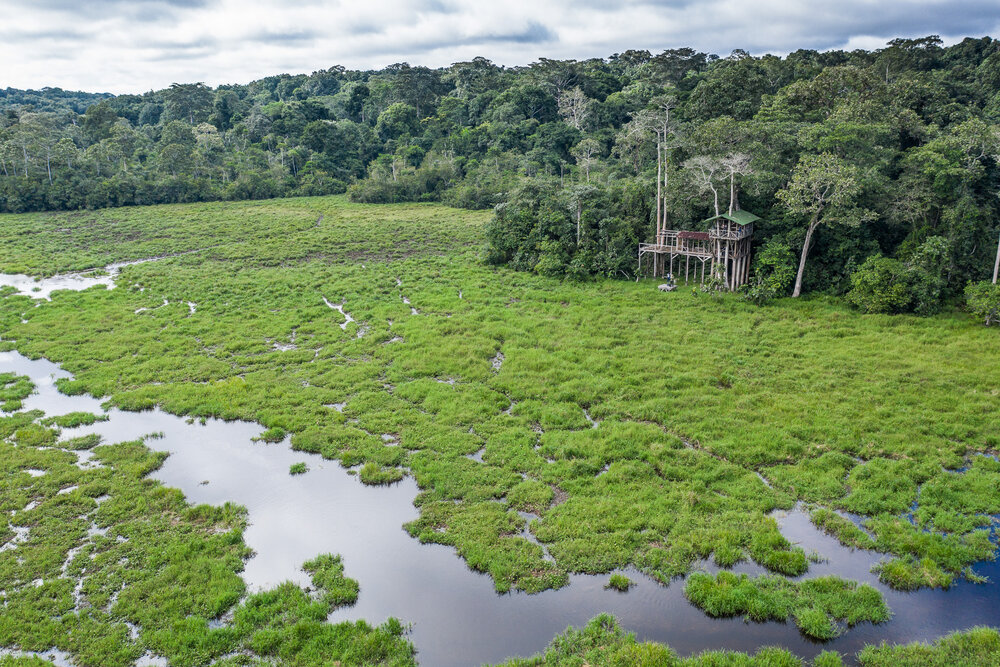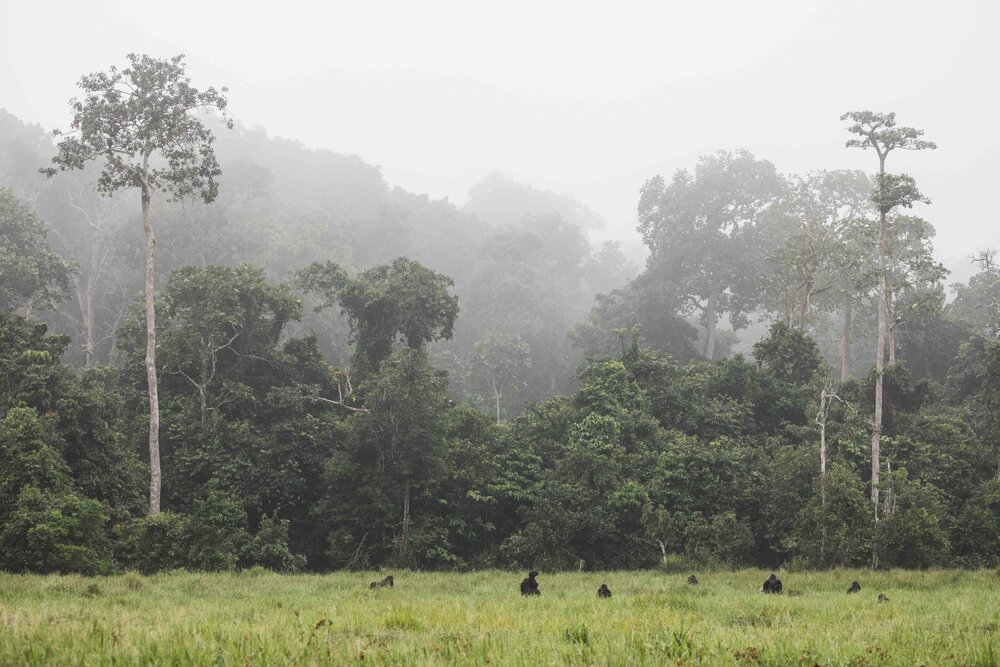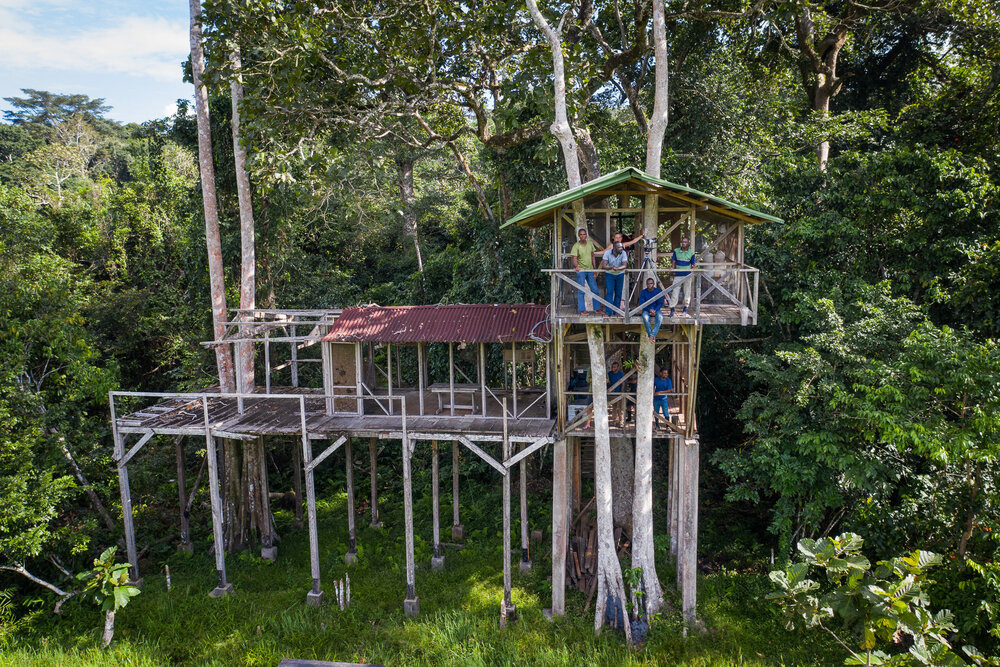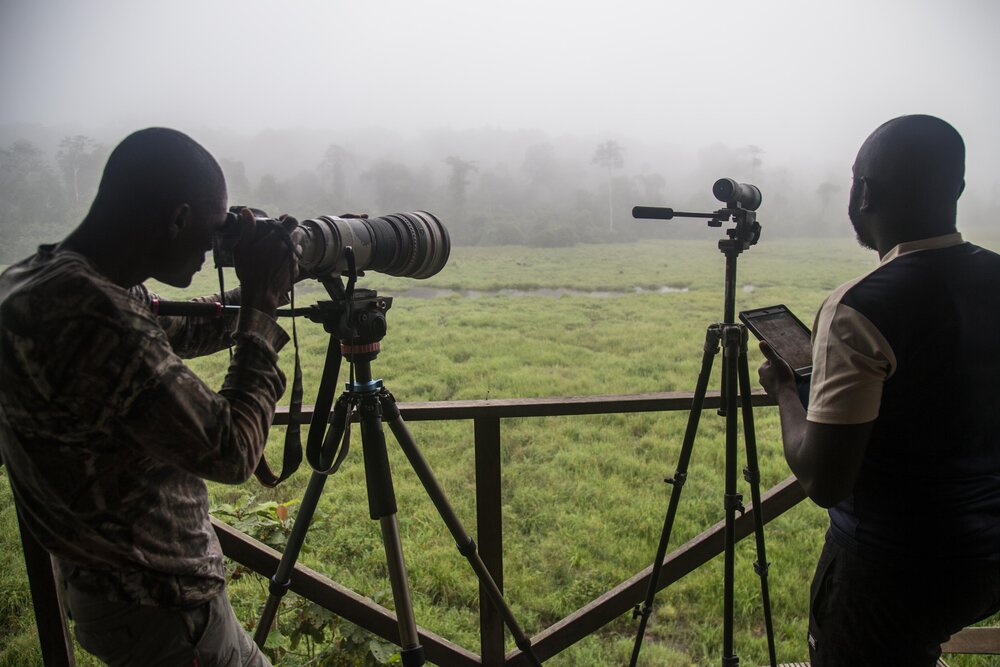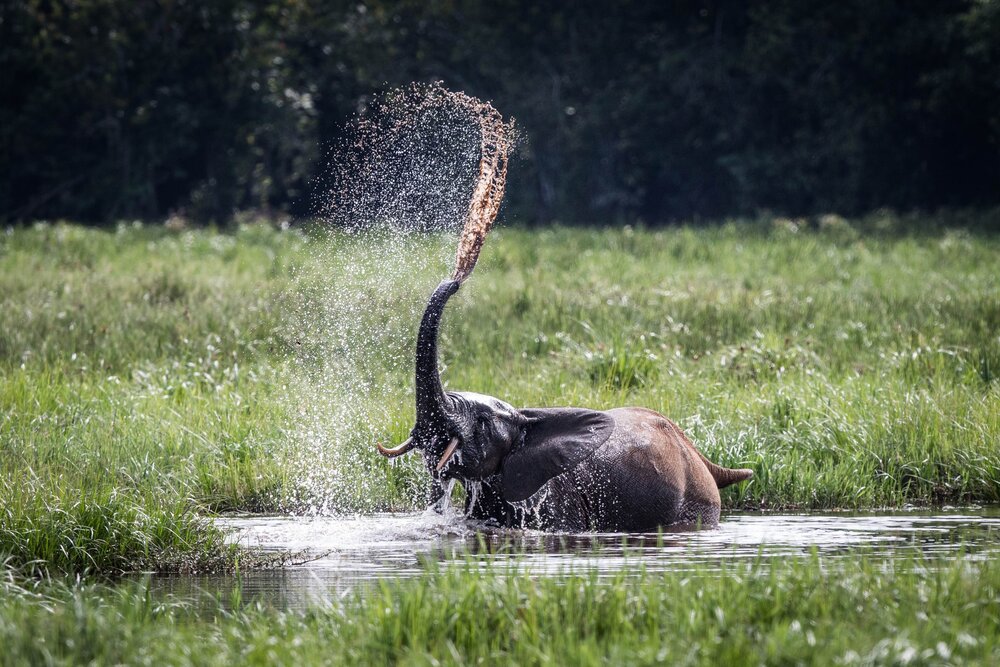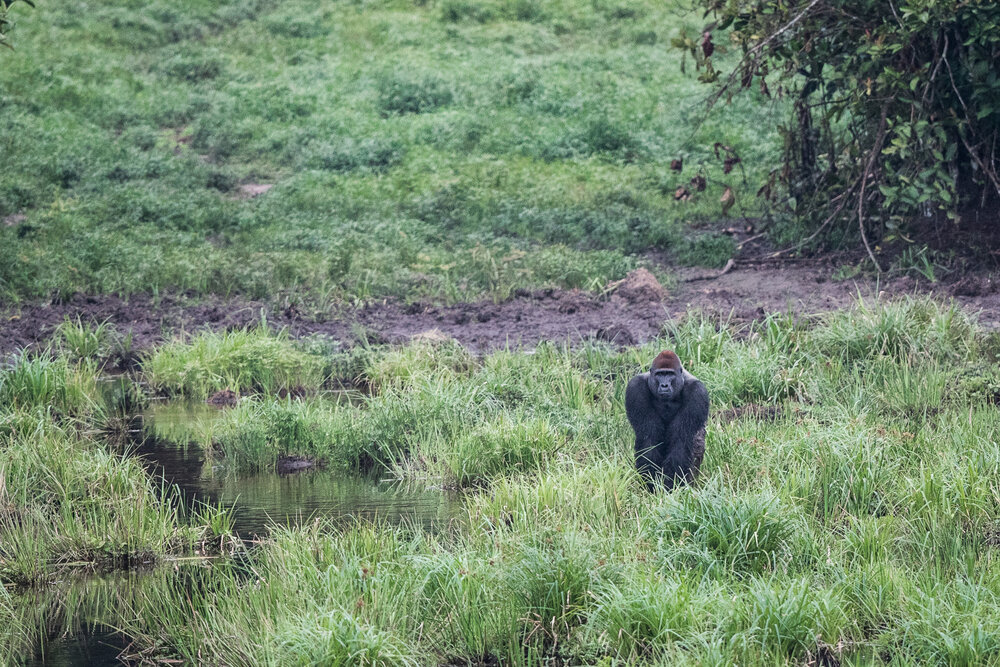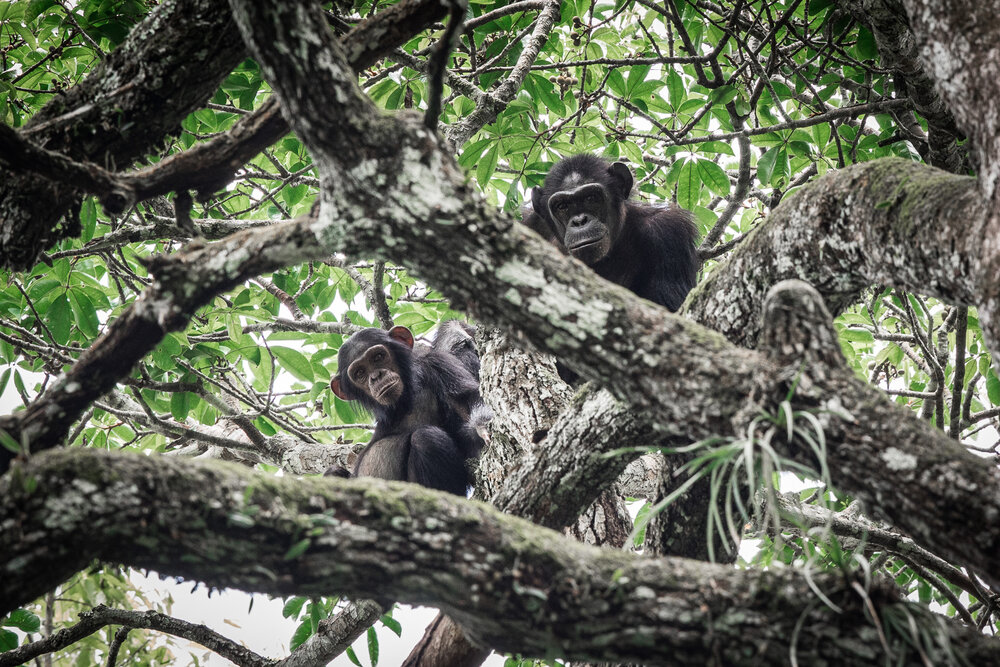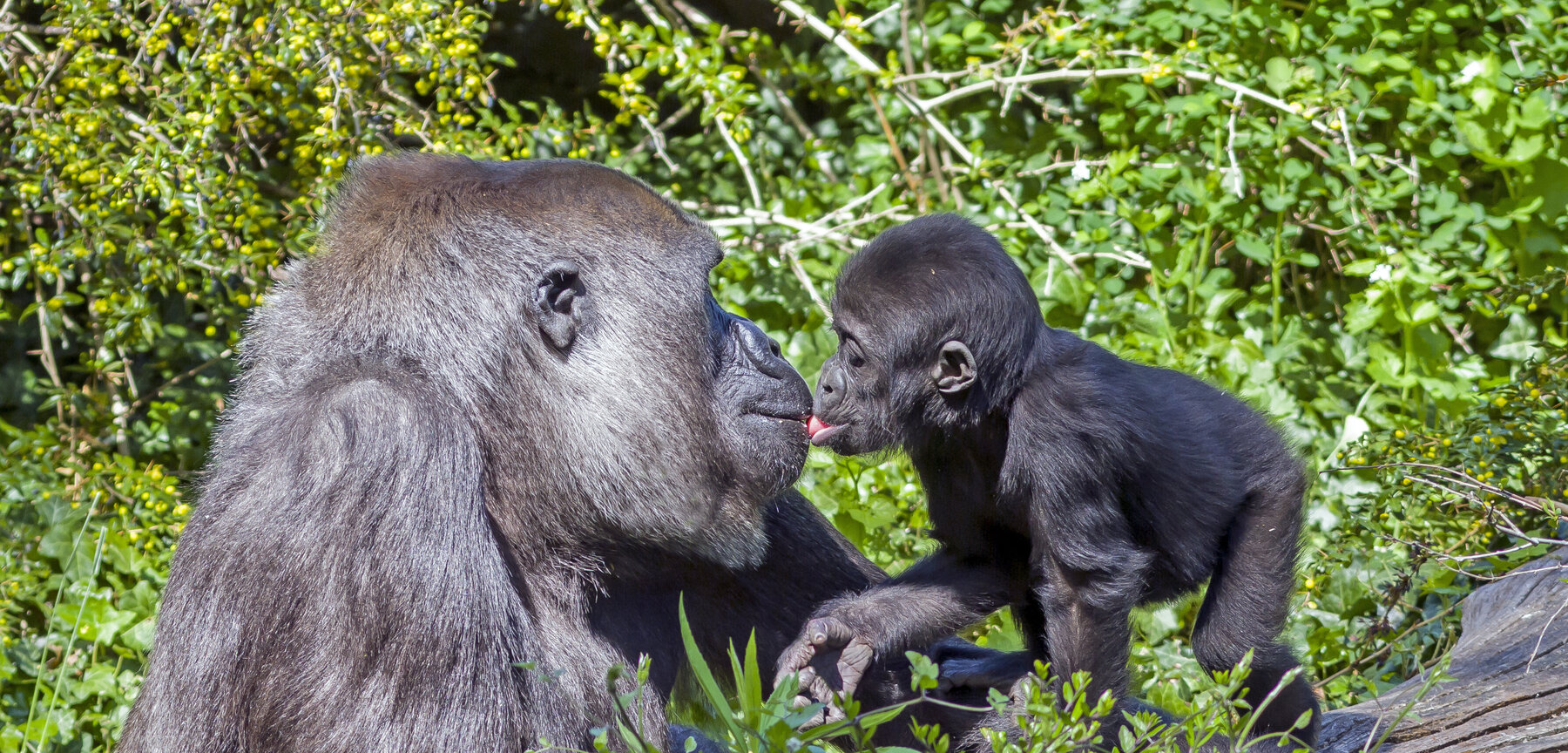
Western lowland gorilla
Berlin’s zoos are supporting efforts to protect western lowland gorillas in the Republic of the Congo.
Project facts
- Project partner
Wildlife Conservation Society Congo
- Species
Wildlife Conservation Society Congo
- IUCN threatened status
Critically Endangered (CR)
- Project location
Nouabalé-Ndoki National Park, Republic of the Congo
- Greatest threats
Habitat loss and being hunted for bushmeat
- Response
Protecting the gorillas’ habitat, researching their behaviour, working with locals
Threat Categories of IUCN

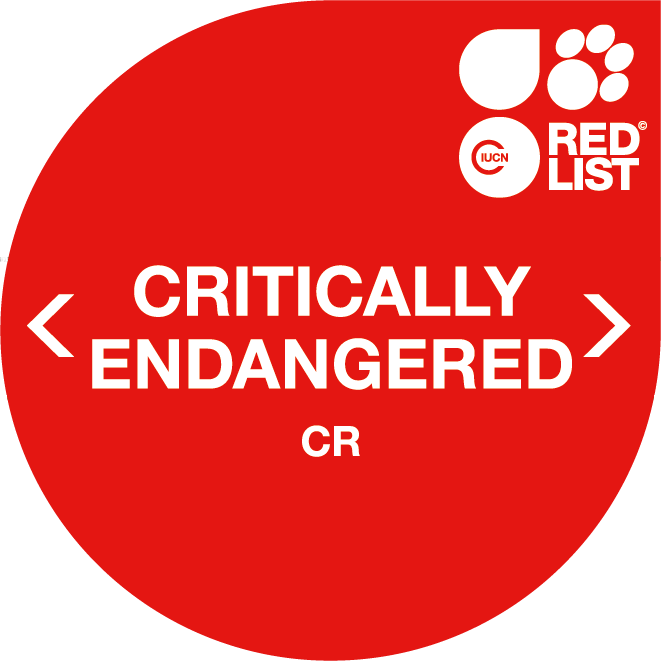
The symbol of Zoo Berlin
Gorillas are the world’s biggest primates. They live in large family groups led by a dominant adult male – often called a “silverback” due to the silver-grey fur on his back and rump. The Zoo Berlin logo features western lowland gorilla Bobby, who was the Zoo’s very first gorilla when he arrived in 1928. Bobby was a big hit with visitors for the duration of his life. Over the decades, other imposing silverbacks have made a home in the German capital, where they have sired many offspring. To date, nine gorillas have been born at Zoo Berlin. The birth of female gorilla Tilla in 2021 marked the end of a 16-year period without any new additions to Berlin’s gorilla family.
At home in Africa
The western lowland gorilla is one of two western gorilla subspecies. These gorillas inhabit a roughly 700,000 m2 area in the western part of central Africa and spend most of their time on the ground, foraging for food. Seasonally flooded swampland provides the apes with a particularly rich and varied diet. It is not uncommon to find several family groups peacefully grazing alongside each other in such areas. Young males in particular will hang around here in the hopes of meeting young females from other families.
An uncertain future
But these good-natured apes are threatened with extinction. The International Union for Conservation of Nature (IUCN) estimates that there are currently only around 300,000 western lowland gorillas living in Africa today, with more than half in the Republic of the Congo. The number of these animals in their natural habitat has decreased drastically due to ongoing deforestation, bushmeat hunting, and Ebola infections.
A safe haven
The 13-hectare Mbeli Bai forest lies within the Nouabalé-Ndoki National Park in the Republic of the Congo. The western lowland gorillas that inhabit this area, as well as many other species, are largely protected thanks to the constant presence of researchers from the Wildlife Conservation Society (WCS) Congo. This dedicated team has been working in the national park’s lush swamps and dense rainforests for almost three decades, gathering important scientific knowledge that helps protect these fascinating animals.
Researchers to the rescue
Studies show that the permanent presence of researchers reduces the threat of poaching in the areas where they are active. Scientific research also helps promote the development of local conservation initiatives and public outreach work, ensuring the long-term protection of this crucial habitat for gorillas and other central African wildlife. Berlin’s zoos are supporting WCS Congo’s in situ work, including training of local research assistants and their often arduous field research. The project partners are united by a tireless commitment to their common goal: preserving the home of these gentle apes forever.
Photos: © WCS Congo/ Mbeli Bai
